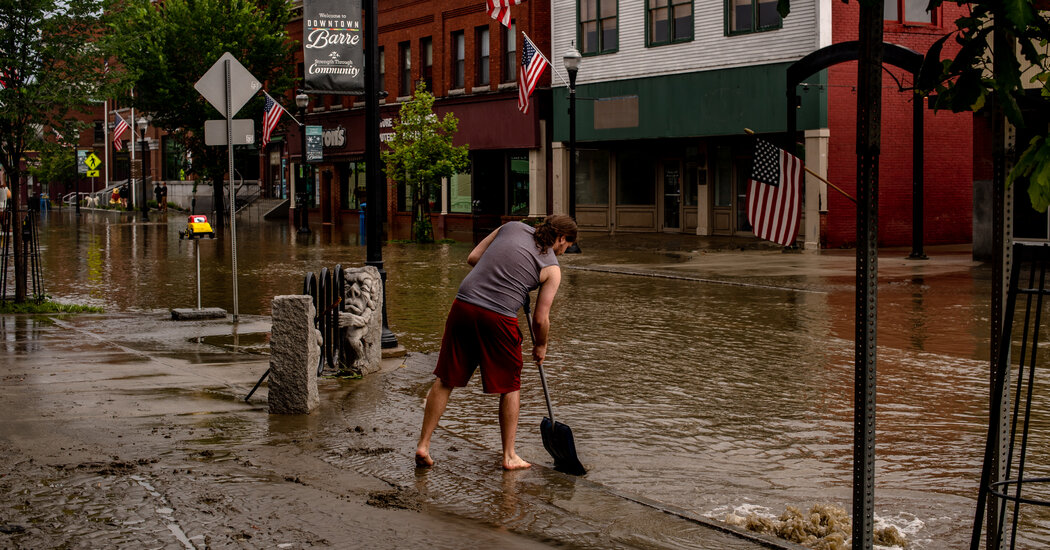India’s Master of Nostalgia Takes His Sweeping Vision to Netflix
In the small Bombay theater that showed big films, his father brought him — over and over again — to see the biggest of them all.
With every one of his 18 viewings of “Mughal-e-Azam,” a hit 1960 musical about a forbidden romance between a prince and a courtesan, the young boy fell more in love. The rays of light, beamed in black and white, opened to him a world at once majestic and lost. The dialogue, crisp and poetic, lingered in his thoughts. The music swept him to places that only later in life would he fully understand.
Bombay would eventually change, to Mumbai. India, cinema and music — they would all change, too. But more than half a century later, Sanjay Leela Bhansali — now 61 and a rare remaining master of the grand old style of Indian filmmaking — has not let go of his seat at that small cinema, Alankar Talkies, on the hem of the city’s red-light district.
His mind remains rooted there even as his work moves beyond the theater walls. His latest project, released on Wednesday, is an eight-episode musical drama on Netflix that gives a “Game of Thrones” treatment to an exalted milieu of courtesans in pre-independence India.
The show, “Heeramandi,” affords more space for Mr. Bhansali’s expansive and exacting approach than any two-hour movie. But it also presents a tricky challenge. How, with big-budget texture and color, do you bring the splendor and grandiosity of royalty — in his imagination, the courtesans lived like queens — to an audience that, at least in his home country of India, will largely be watching on tiny mobile screens?
One answer is technical: more close-up shots. The other is personal: a vision all his own. With his decades of commercial success, he has the license to hold tight to the kind of cinema — song-filled nostalgia mixed with obsessive attention to light and detail — he fell in love with early, and forever.
“I am still in Alankar Talkies,” he said in an interview last summer, between shoots. “I am seeing it on that big screen over there.”
‘Big Scale’
Outside, Mumbai was drenched in monsoon rains.
Inside, under the hangar that covered the three-acre set, Mr. Bhansali was lost in a city born as much of imagination as research.
Hundreds of workers had toiled for nearly 10 months to create his Lahore of the early 1900s. The furniture was vintage. The curtains and the miniature patterns on the corridor walls were hand-painted. The slogans on the city walls, the store signs — all calligraphy, aged and faded.
When his friend Moin Beg brought him a 14-page concept for the project about 20 years ago, Mr. Bhansali sat on it. There were too many characters, too many things going on, for a feature film.
In the years that followed, Mr. Bhansali felt as if he was training himself “to handle big scale.” He made successful films — in a shrinking environment for artistic expression that made him the subject of violent attack — that dealt with dancing girls and royal courts. A consistent theme was complex, powerful, beautiful women.
Another big step: He began creating the music for his own movies.
Some of his deepest artistic questions since childhood were triggered by music. Through music came a belief that any artist is a 200-year-old or 300-year-old soul. The artistic process is a slow discovery of what the soul already knows.
Inside Alankar Talkies, the boy would forget about the actors on the screen and be transported by the voice of the Indian singer Bade Ghulam Ali Khan.
“Somewhere, the soul started responding to it,” he said, “‘that I kind of understand this, I know where my father is trying to take me because I’ve traveled somewhere in the past.’”
His heart was set on “Heeramandi” because so much came together in one world: refined taste, classical music and dance, power politics and powerful women.
Before independence in 1947, India was a collection of princely states under British rule. Elite patronage had given rise to quarters of courtesans, and an ecosystem of music, dance and fashion grew around them.
Heeramandi was one such place in the city of Lahore, which after India’s partition became part of Pakistan. The Urdu-language writer Shorish Kashmiri described Heeramandi even in its decline as “an art gallery where the nights remain awake and the days sleep.”
The Netflix series captures a Heeramandi where the courtesans know they are the last of their kind.
But it is not a slow march to nothingness. Mr. Bhansali merges the women into the whirlwind of India’s freedom movement.
“I always grant my characters a lot more than they actually deserved in life,” he said. “I wanted them to be bathed in fountains — big corridors and big mirrors, so that the reflections seem larger than life.”
Every Move
On his sets, it is complete surrender to a vision that keeps changing in Mr. Bhansali’s head. Some actors have described his process as torturous, his temper difficult. Others have likened it to film school.
“What my role started as, and what it became — a lot of it happened on paper, and a lot of it happened on the set,” said Sonakshi Sinha, a lead actress in the series.
Ms. Sinha was shooting two small segments that day.
First was the final bit of a song. In its climax, Ms. Sinha’s character sways through a crowd of party guests in her drawing room, toward her veranda, drink in hand. She stares at a rival madam across the street, raises her glass and tosses it down.
In take after take, Mr. Bhansali drove a point home: Every move, every gesture, had to be done so that the eyes, the glare, remained the focus.
“If you arrive and just pour, then there is no joy,” he told Ms. Sinha. “Take a beat.”
The segment they shot next demonstrated how Mr. Bhansali thinks, and how he obsesses.
It was supposed to be simple: Ms. Sinha’s character would put out some candles, symbolizing a closing down at Heeramandi so the courtesans could join the freedom fight.
During a bathroom break, Mr. Bhansali walked past a chandelier. As he stood at the urinal, he had a new vision: Ms. Sinha’s character would use a pulley to pull up the chandelier, wrapped in a drape, then walk away as the lights went out.
It took five hours to light and complete the shot, for a five-second scene.
Frustrated that it was not quite right, Mr. Bhansali turned to what helps connect him to his abstraction: music. He asked an assistant to play an old song, a ghazal, on an iPad. The voice softly filled the air — then another take.
‘My Place’
When his father, a producer who never made it, was on his deathbed, he had a peculiar request: He dispatched his son to get a cassette of a tribal singer who, after India was split, had ended up on the Pakistan side, where their own family had roots.
He wanted to hear the song “Hayo Raba” by Reshma — a voice raw, untrained.
By the time young Sanjay returned with the cassette, his father was unconscious. The scene that unfolded still plays out in his mind.
“He had gone into a coma,” Mr. Bhansali said. “I had no place to play ‘Hayo Rabba,’ and my mother kept saying, ‘Play “Hayo Rabba”!’”
Why that song? The closest he comes to an answer is that in his father’s state of hallucination, he was connecting with his ancestors.
“Life is so fascinating,” he said. “Can films ever capture this?”
He has spent his life seeing if it can.
When he was about 6, his father took him to a film set. He told him to wait in a corner while he talked to his friends.
A cabaret was being shot.
“A skimpily dressed woman was eating an apple and throwing it on a semi-naked man,” he recalled.
As he looked up — to the catwalk with hanging ropes and lights and screens — he was lost in wonderment.
“I realized I don’t want to be on the cricket ground, I don’t want to be in school, I don’t want to be anywhere. I want to be here. This is my place,” he said.
“That woman biting that apple, throwing it on the man — I think that kid was seduced.”


